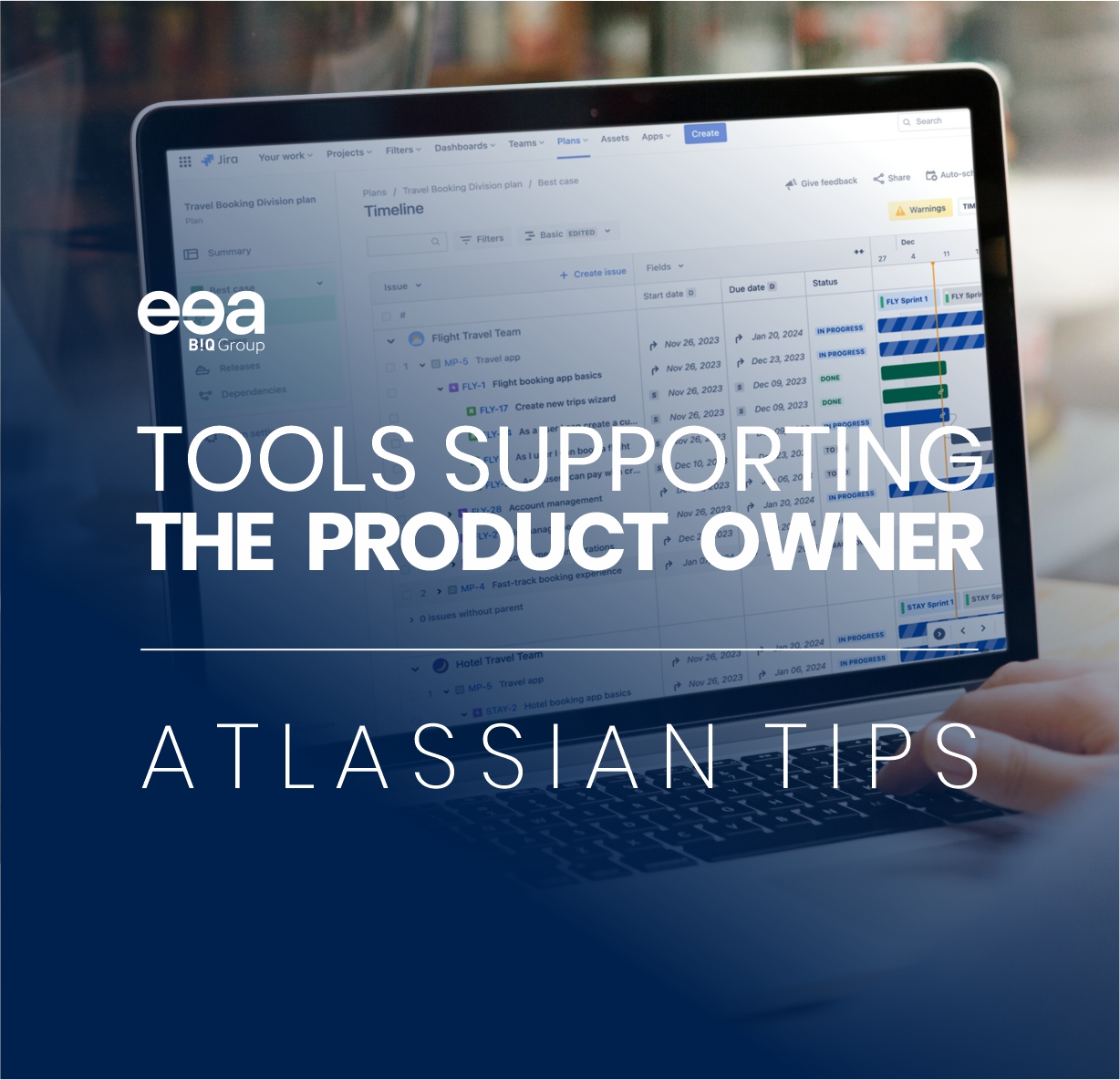The current times are very turbulent. How many positions or employers have you changed in the last 10 years? Do you estimate the number of projects or products you have worked on? How many teams have you worked with?
With every such change comes the opportunity to set rules, processes or new tools.
If I had just taken the position of product owner…
…I would be interested in the following questions:
- How should I spend the first week?
- How to make the most efficient use of time?
- Who and what should I get acquainted with, and what should set up?
Primarily, we will talk about products that maximize support for the product owner’s activities. But!
What is important to remember in the first days and weeks in your new position?
- Know the platform and architecture of the product.
- Know the product team and the key stakeholders.
- Build relationships with developers and designers. Invite developers and designers to lunch or after work for a beer and darts. You might learn more about the history of the product that way than from any documentation.
- Find out who your customers are, what they like about the product and what bothers them about it.
- Collect all available data and evaluate them.
When we talk about customers in point 4, I don’t just mean current customers. We only see this with a very small percentage of product owners who, even with time, reach out to former users. Those who have opted for the alternative. They can now evaluate their decision to change the product. Explain what motivated them to change and whether it had a positive or negative outcome. Feedback from a disgruntled or even a lost user can be several times more beneficial than the flattery of loyal users.
Who owns the product?
How to describe the product owner? What are his key responsibilities?
WARNING: Do not confuse the product owner with the product manager (who defines the product vision, handles marketing, ROI…). Unfortunately, often the roles of product owner/product manager are combined and performed by the same person.
The product owner is responsible for maximizing the value of the product that is created by the development team. Whether the product is delivered using an agile methodology or a waterfall depends on the specific organization. It is the product owner who is responsible for managing the product backlog.
You will find a large number of definitions… some will agree, and others will differ slightly. If their authors had been more specific, they could have written that the product owner necessarily performs the following activities:
- He manages the backlog,
- prioritises features,
- monitors the progress of the work,
- collaborates with the product team he is part of (designers, developers, testers…),
- Obtain feedback from the client.
Platforms and products supporting product management
How to select a tool to support the above activities? One certainly won’t be enough, you can rule it out straight away. We need to support seven phases of product management (everyone has a different number of phases, but in EEA we stick to this fairly clear path):
- Idea
- Specification
- Roadmap (plan)
- Prioritisation
- Delivery (implementation)
- Evaluation (analysis)
- Feedback
The tools that the product owner will use will not only serve him or her. He will connect them with clients (users), but also with collaborators.
What platforms/products do we recommend?
Idea management
We collect ideas from users, and the team, or come up with them ourselves, based on feedback, and competitors’ news. It sounds simple, but at the same time we have several roles where somebody has to be able to create ideas, somebody has to be able to just vote for them, comment on them, for example. Plus, we don’t want to share content completely publicly.
The central tool for collecting ideas and working with them is 100% covered by Jira Product Discovery. It offers exactly what we describe in the first paragraph.
How much will it cost? The point of billing is that you only pay for “creators” who have full access with the ability to set up and manage the product. So usually only a group of product owners or elected representatives of the product team use the license. Your selected customers, from whom you want to collect suggestions, do not benefit from any licenses.

However, Jira Product Discovery is not only for collecting and discussing proposals but also for communicating roadmaps.
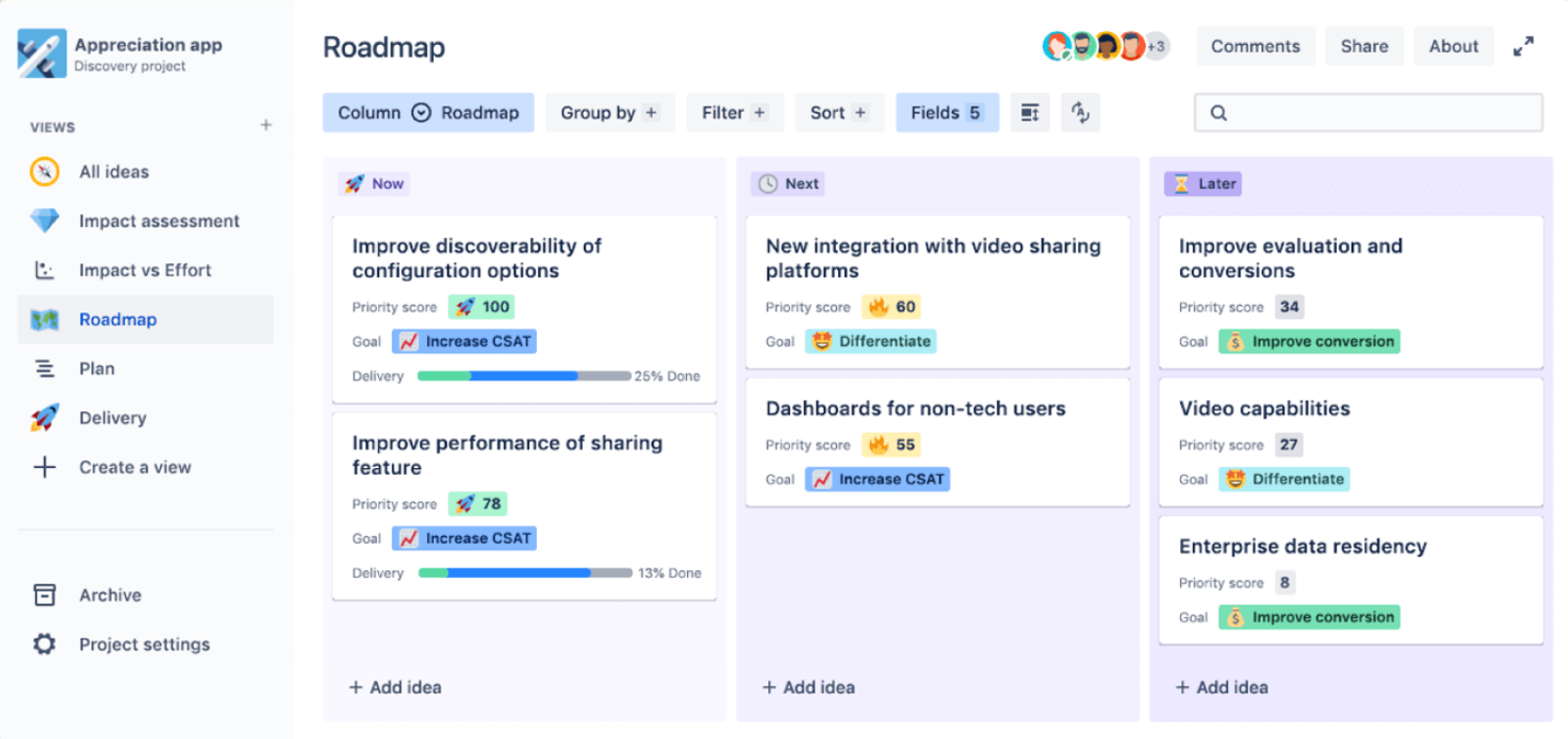
The tool integrates logically with Atlassian Cloud products Jira Software, Jira Work Management, Jira Service Management and Confluence. This makes it easy to link individual ideas with, for example, epics in Jira. Or an idea is linked to a more detailed description in the form of a page in Confluence.
Issue tracking and task management
The product roadmap in Jira Product Discovery does include ideas, their details and the expected version they are to be released in, but the tasks for the product team will be much more detailed.
There is no doubt that Jira Software will be the most suitable tool. The latter will help the team break down complex functionality into stories that are easier to describe, estimate, prioritize, sort in a backlog, and finally plan into sprints. As mentioned, we recommend linking epics or even stories to ideas in Jira Product Discovery.
To make sure that the product team has a clear and sufficiently detailed plan, I recommend using the “Plans” functionality in Jira Software Premium, which allows you to create product plans, including their scenarios. A very strong point of the functionality is the fact that plan modifications are not immediately overwritten in Jira Issues and are continuously notified to users.
All edits, including the creation of new tasks, can be published to Jira in bulk and, for example, disable outgoing notifications of changes made. A specific schedule can only be shared with selected users and groups. Alternatively, it can be exported to a .png file with the option to set the timeline scale and several other parameters. The schedule is certainly nothing static, so any changes that pass issues in Jira are immediately transferred to the schedule.
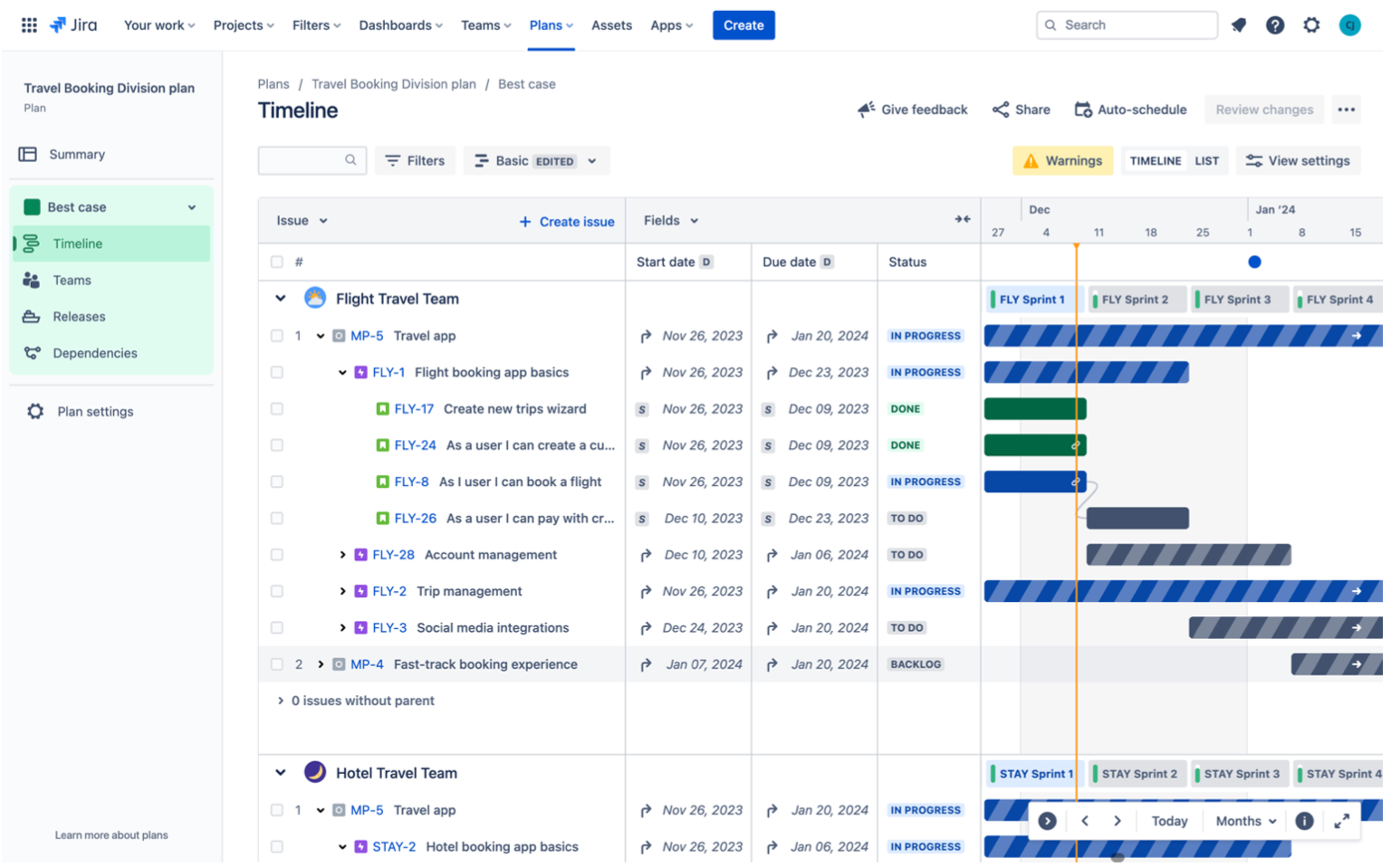
The complexity of some solutions requires the creation of dependencies between tasks. Roadmaps also offer a visualisation of these.
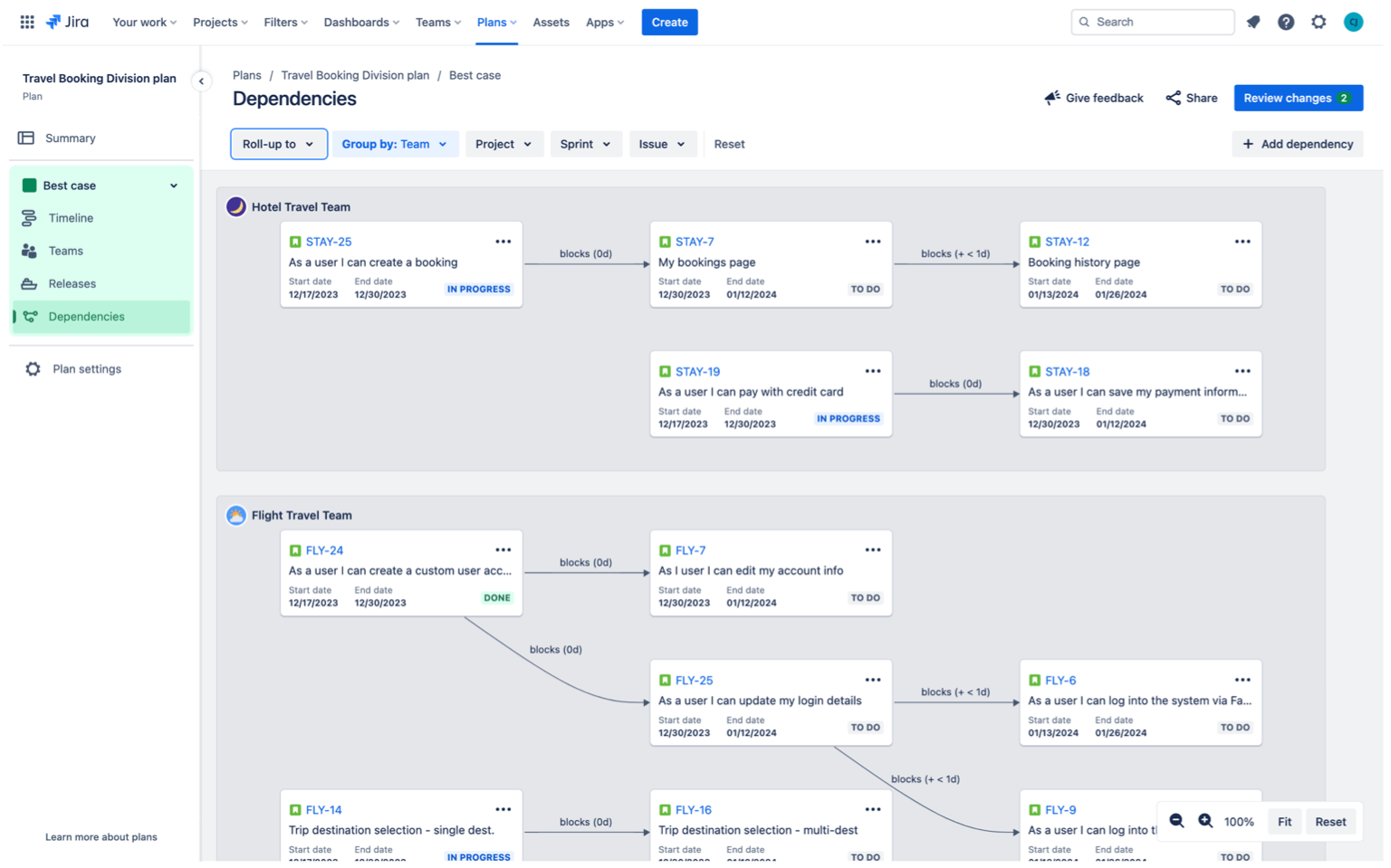
Documentation, knowledge database, brainstorming tool
Confluence will be the central repository for the product owner for requirements specifications, technical documentation and the product space itself, where the team can find all key information and references.
Like Jira Product Discovery, Cloud Confluence offers user access that is not chargeable. You can set up to 5 guests per licensed user, who have more limited rights and access to a maximum of one Confluence space. But for collaboration with key users or partners, this access is usually quite sufficient.

Confluence content creation supports everything you can think of (formats, inserting images, galleries, tables, code, attaching links, uploading files, changing page layouts, and more).
We highly recommend the use of templates/templates. This is a way of creating content where instead of creating a blank page, the page has predefined content or just a structure that the user adds. It can also follow the instructions that templates often contain. Templates can be used by default, or custom templates can be created.
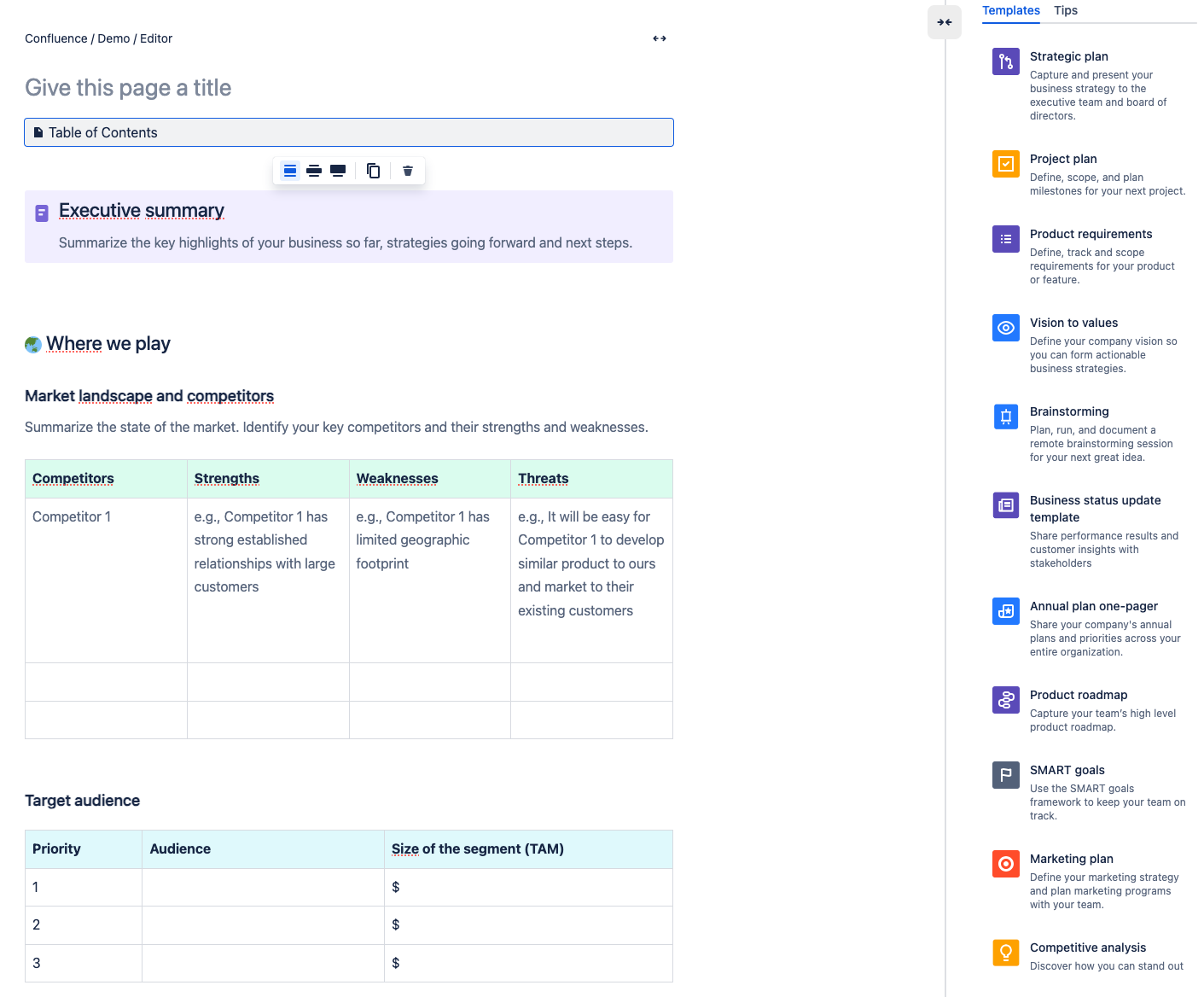
The biggest news of 2023 at Confluence is undoubtedly the whiteboards, which are in short a digital environment for visualising ideas and problems that need to be solved. Whiteboards in Confluence are a real asset. They have truly become a space for brainstorming at Confluence. Whiteboards won’t just be pleasant pictures, they will turn ideas into actions. They make it easier to transform ideas into tasks in Jira.
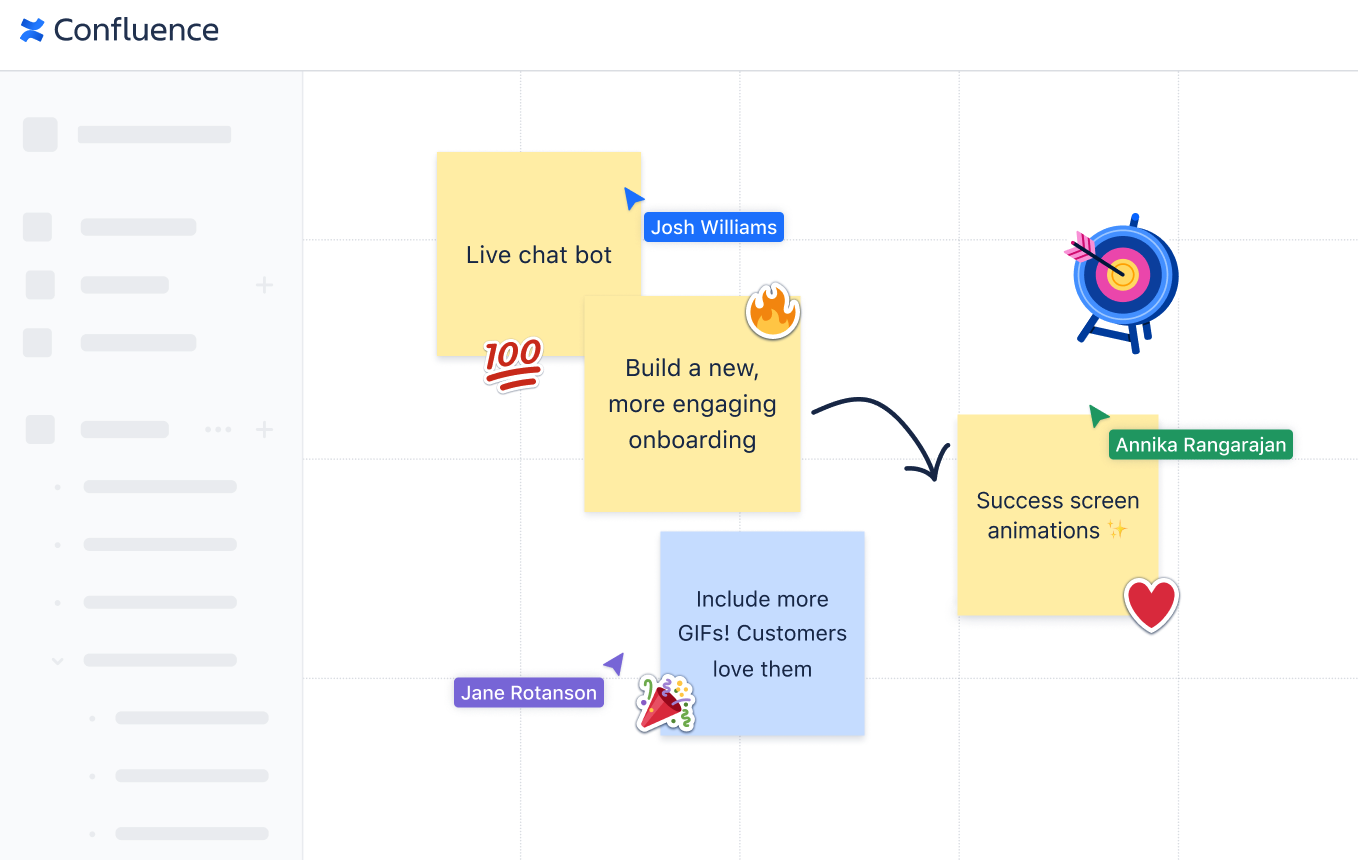
They support:
- Creating problems in Jira – objects on the whiteboard can represent real problems in Jira,
- Jira issue editing – actions with the object representing the Jira issue on the whiteboard will update the Jira issue,
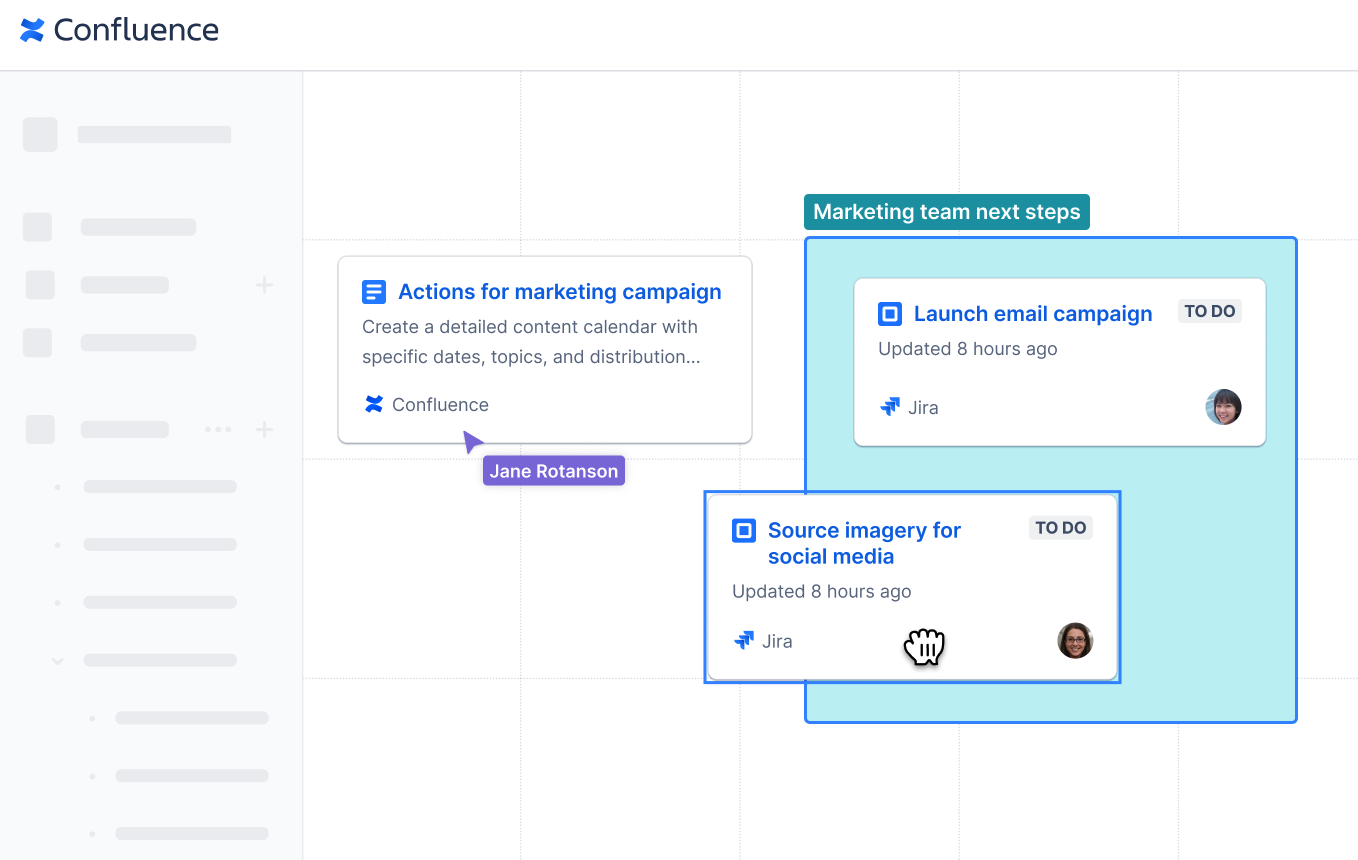
- structured pages – text and tables in the content pages are now complemented by various diagrams and mind maps in Confluence.
Coordination with non-technical stakeholders
The product owner has to communicate with many people who have something to say about the product, even if they are not developers or users. Typically, these will be stakeholders who are often represented by non-technical departments of your company.
From their links to the product comes a series of tasks that need to be recorded somewhere and tracked in real-time. Projects in Jira Work Management are the ideal place for these tasks, whose dependencies link them to a product space in Confluence, a software project in Jira, or specific ideas in Jira Product Discovery.
In many implementations of Atlassian’s tools or process optimization, as consultants we encounter a situation where non-technical roles are reluctant to accept the fact that they will not have a Jira Software license. What is the reason?
They mistakenly fear that Jira Work Management will not provide them with the same level of convenience as Jira Software. They “fear” that they will lose agile whiteboards. In projects with Software, this is true. But! Jira Work Management projects have been offering kanban boards for some time now. They are not the same as the ones in Jira Software, but they offer enough space to visualize tasks. A less experienced user will not notice the differences.
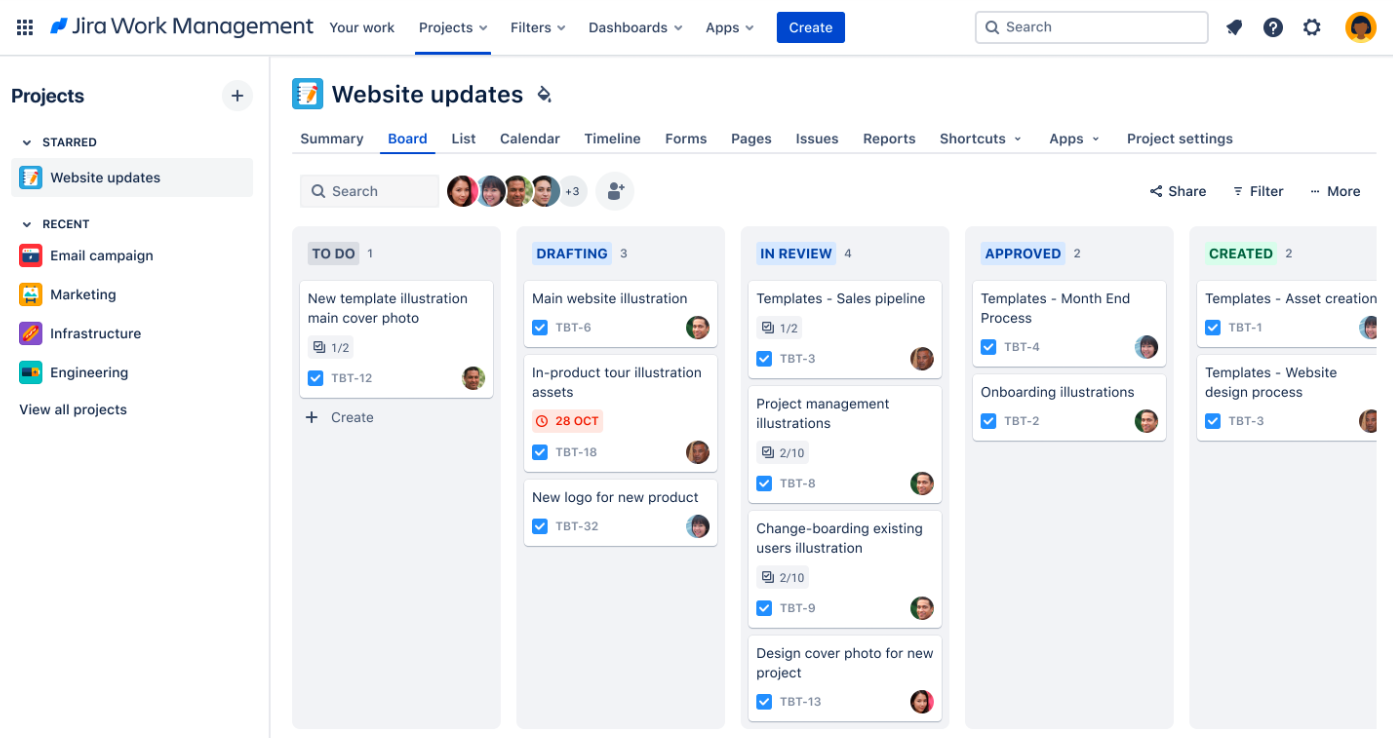
Prototyping, virtual meetings, real-time communication
The prototyping tool is not likely to be chosen by the product owner, rather it will be the choice of the design team. It is not necessarily necessary or even possible for Atlassian to include everything. And so there’s no need to make a secret that one of the best tools will be Figma. A modern design tool for prototyping and wireframing. It includes a variety of auxiliary templates.
What other tools will the product owner use? Slack, Teams? It’s probably not ideal to communicate with the team via SMS or WhatsApp. We’ll be hard-pressed to find teams that share a single office geographically, so you’ll be using Zoom or a similar service for online meetings.
Why spend time selecting and setting up tools
How do the right working tools benefit the product owner? Tools bring consistency to product management. They support the communication of the vision to all key roles. Consistency! That sounds terrible. It is beneficial (not a given) for a product owner, for any role in the organization, to not have to deal with “where and how” questions in routine, repetitive activities. When describing features, prioritizing the backlog, and tracking the performance of the development team.
Marek Vejrosta
Atlassian Consultant
If you need help from experts with the implementation or setup of Jira and Confluence, or advice on how to use them most effectively in your company, don’t hesitate to contact us.
Our Atlassian Solutions
